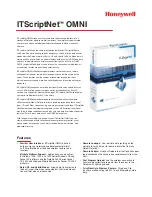
Chapter 10 EG Basics
48
• Tweak them together
When you start out tweaking the EG, you may want to set [SELECT] to both FEG and AEG.
This eliminates a lot of confusion about which EG is doing what. For example, if you have sep-
arate settings and the FEG opens up long after the AEG has already shut down, you’ll probably
not hear much of the sound. Similarly, if the AEG takes its sweet time to unfold — by which
time the FEG has already come and gone — the sound may never come through.
• Tweak them separately
Adjusting both FEG and AEG together (see hint above) is convenient and easy — but it also
results in relatively boring, static Voices. To make really interesting, organic sounds with shift-
ing textures, the trick is to adjust the Filter and Amplitude EGs separately, yet make sure that
they coincide with each other often enough to keep the sound from dropping out entirely.
There are no diagrams to help you with this — you’ll have to use your ears!
EG Select — FEG and AEG
Determines the EG settings for the filter
(
FEG
) and amplitude or volume (
AEG
).
Press [SELECT] to enable FEG, AEG or both
(
ALL
), then use the EG controls (see below)
to change the EG settings.
Settings
FEG
AEG
ALL
(both FEG and AEG)
EG Controls
Attack
Determines the time it takes for the sound to
reach full volume when a note is played.
Decay
Determines the time it takes for the sound
volume to reach the Sustain level. This is
similar to the natural decay heard in acoustic
instruments.
Sustain
Determines the level of the sound for when a
note is held. If this is at or near minimum,
the sound will die out as the note is held. If
this is at or near maximum, Decay will have
no effect and the sound will remain at maxi-
mum level as long as the note is held.
Release
Determines the time it takes for the sound to
reach minimum volume (or silence) after a
note is released. If Sustain is set too low, this
may have little to no effect on the sound.
Range
0 — 127 (for each knob)
















































